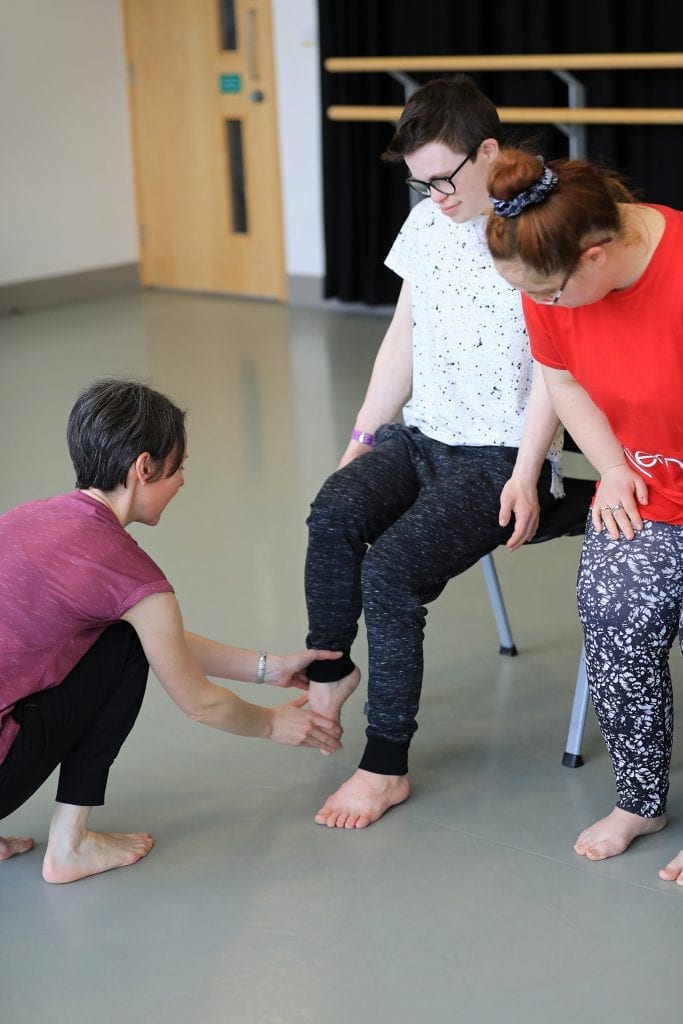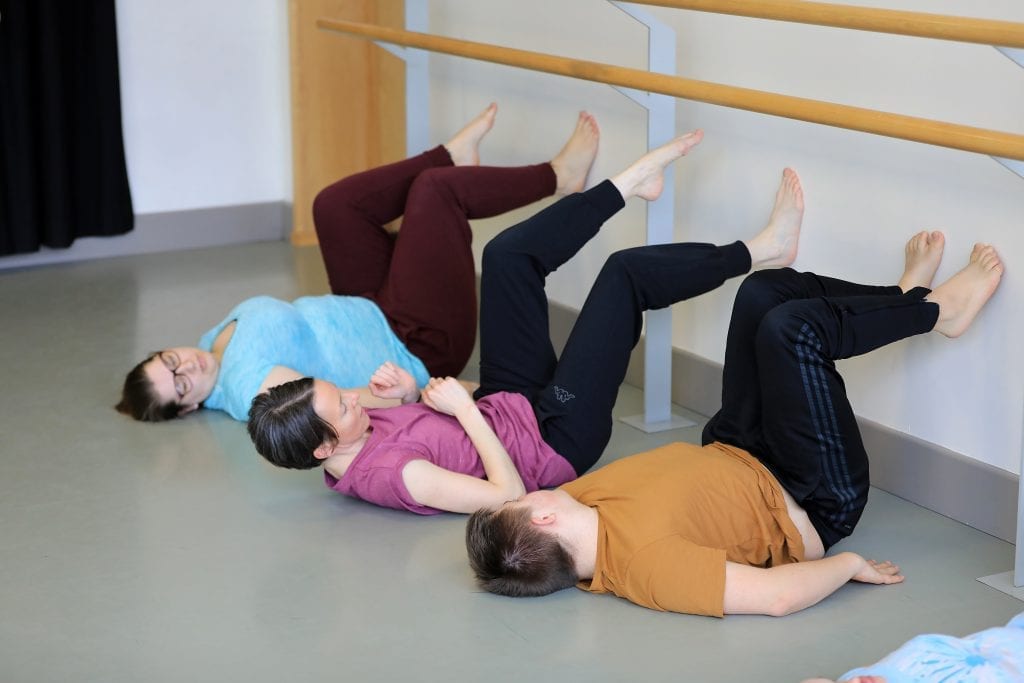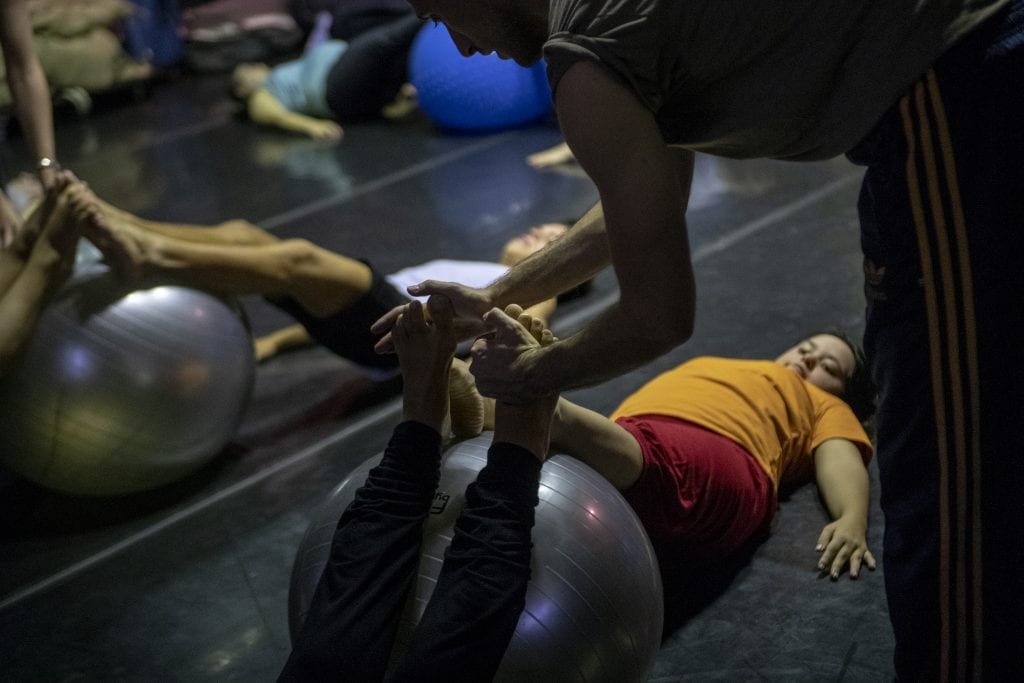Ankle Focus
Alignment of the leg and the development of strength to maintain this is an area of concern to all dancers, but especially those with hypermobility.
The purpose of this activity is to develop the dancer’s ability to maintain good alignment of the lower leg through building strength in the feet and ankles.
Alignment of the leg (feet, ankles, knees, pelvis) and the development of strength to maintain this is an area of concern to all dancers, but especially those with hypermobility. Some dancers display flat feet which may also roll inward; have over extended knees and torsion in the lower leg. This makes them more prone to injury. Good alignment and strength in the leg provides the foundation for other movement skills such as balance and elevation, so is essential to develop if a dancer is to realise their potential. It is therefore important to integrate these principles throughout ALL activities especially in locomotion and elevation activities where the risk is higher due to increased impact and speed of movement.
Finding articulation of the feet and resistance in movement can be challenging for dancers and take time to develop. Activities that may prove useful include:
* resistance band – slowly moving from a flexed foot, pushing through the ball of the foot to a pointe. This is useful for finding articulation, feeling resistance and building strength.
* small loop band – using a band around the knees during plie. This helps to strengthen the muscles required to maintain alignment.
* surfaces – working on an uneven surface is more challenging and can improve balance and strength. Try working on a yoga or foam exercise mat or any surface that isn’t flat.
* towel – place a towel on the floor and scrunch up with the toes.
* practice picking up objects with the feet.
* draw a line – use electric tape or eyeliner to draw a line along the lower leg and feet so the dancer can see their alignment.
* stickers – use stickers to act as reminders on the feet, ankles, knees and hips.
* imagery – useful imagery for the feet includes imagining the feet are on a catamaran, wearing skis or visualising the shape of footprint in the floor.
* small ball exercise – lie on back with a small ball between ankles; legs at right angle to body. Plie and extend, keeping feet in line with pelvis. This can be performed in parallel or turned out.
* large ball exercise – in pairs, lie with lower leg resting on the large ball, the soles of feet touching. Alternate pushing against each other’s feet to pointe and flex. Raising into a bridge position, while performing the exercise, increases the challenge through developing core strength and stability. It may be useful to practise the action without the ball first, to gain an understanding of the concept.
The European Commission support for the production of this publication does not constitute an endorsement of the contents which reflects the views only of the authors, and the Commission cannot be held responsible for any use which may be made of the information contained therein.
Small Ball Exercise
Small ball exercise – lie on back with a small ball between ankles; legs at right angle to body. Plie and extend, keeping feet in line with pelvis. This can be performed in parallel or turned out



Teaching Guidelines
These exercises work best towards the beginning of class.
Changing orientation, i.e. repeating the same chair exercise lying on the floor, can be very challenging for some dancers as it involves translation. It may take some time for them to make the transition; breaking down the activity may help with this.
This activity uses a wide range of teaching methods to appeal to different learning styles. Visual and tactile methods of communication are generally more accessible and effective for dancers with additional learning support needs.
In this activity we used the following methods of delivery. However, you may find others on the list more suitable for your dancers:
Auditory
* verbal instruction
* use of voice (intonation, pace)
* use of music/sounds
* imagery delivered verbally
Visual
* physical demonstration
* visual imagery (picture, object)
Tactile
* tactile cues given by self, peer, or teacher
* physical objects
Kinaesthetic
* experience how the movement feels e.g. resistance, pressure, effortless etc.
Feedback
* verbal feedback from peer or teacher
* visual feedback from peer or teacher
* tactile feedback from peer or teacher
* visual feedback & self-correction




